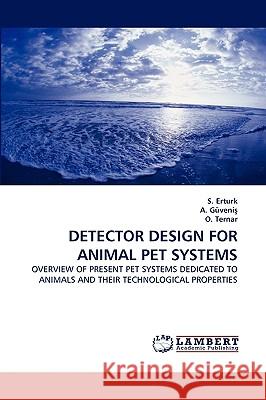Detector Design for Animal Pet Systems » książka
Detector Design for Animal Pet Systems
ISBN-13: 9783838346281 / Angielski / Miękka / 2010 / 176 str.
A detector design especially for small animal PET systems requires taking into account three main factors: these are high energy and spatial resolution and cost. When examining the state-of-the-art PET detectors, it can be seen that many researchers have preferred to use continuous (monolithic), block or discrete crystals for small animal PET systems. Although, the discrete crystal detector designs have provided high spatial resolution, they also have caused many complications such as, reduced light collection (low packing fraction), labour-intensive use and increased costs. In this book, to overcome these limitations, the feasibility of using a continuous crystal instead of block or discrete designs has been explored for high resolution small animal PET applications.This book is written for nuclear medicine physicist, engineers and researcher.It covers overview of present state of the art PET systems dedicated to animals and their technological properties. Also, it includes applications of Monte Carlo simulation methods for animal PET detector designs
A detector design especially for small animal PET systems requires taking into account three main factors: these are high energy and spatial resolution and cost. When examining the state-of-the-art PET detectors, it can be seen that many researchers have preferred to use continuous (monolithic), block or discrete crystals for small animal PET systems. Although, the discrete crystal detector designs have provided high spatial resolution, they also have caused many complications such as, reduced light collection (low packing fraction), labour-intensive use and increased costs. In this book, to overcome these limitations, the feasibility of using a continuous crystal instead of block or discrete designs has been explored for high resolution small animal PET applications.This book is written for nuclear medicine physicist,engineers and researcher.It covers overview of present state of the art PET systems dedicated to animals and their technological properties. Also, it includes applications of Monte Carlo simulation methods for animal PET detector designs.











